Build your own lifeboat
Artist Jenny Pope talks about why she built a coracle on her kitchen table, how we create buoyancy together, and how she's finding ways to navigate climate anxiety.
Jenny Pope is an Edinburgh-based artist and coach with a background in mental health, advocacy and social work. Fascinated by materials and the mindful practice of making, she has recently turned her focus towards making objects in response to living by the sea in our age of climate anxiety and rising sea levels. She’s in Orkney just now researching some new work, and dropped by my studio for a cuppa and a chat.
You can listen to the recording of our conversation at the link above, (please excuse the shuffling at the start as I reposition the mic!) or you can read the transcript below which also has lots of lovely pictures of Jenny’s work.
Samantha Clark
I'm really pleased to have visiting my studio here in Orkney the artist, Jenny Pope. We decided it'd be great to have a conversation around the work that Jenny has been doing, because it has a lot of common ground or common water, perhaps with some of the ideas that I'm really interested in as well. So, Jenny, would you like to just introduce yourself a little bit and say what you do and what's informing the work that you're doing now? And what you're hoping to do?
Jenny Pope
Thank you, thanks for asking me to come along. I'm Jenny, I'm based in Edinburgh, I'm an artist, I make sculptures and I often use recycled materials. I make tools that are about uncertainty and how we might grapple with our common anxieties about living in this changing world at the moment. A lot of that is informed by my dual career in being a coach and a mentor, and my background in mental health and well being. I've worked a lot in supporting people with mental health issues, most recently as an advocacy worker. So I've helped people put their point of view across who feel marginalised and challenged. I like to support the underdog, and helping that quieter voice come through. And also linking mental health and anxiety to everybody. It's not 'them and us'. It's a sort of continuation, a spectrum, which we can all go through at different points. I feel that approaching something like climate change is really important, because it's a natural response to be anxious and worried about it, because it's really a very challenging time ahead, and that we're currently in. So it's a normal response, I think, to be anxious or angry or upset and think about what we can do as individuals about it.
Samantha Clark
And exploring that through your art practice?
Jenny Pope
Yes. So the last few pieces of work, sculptures, have been linked to climate change. Last year I made a sort of machine with animals on the endangered list going round, in response to a George Wyllie sculpture. And this time, at the moment, I'm focusing on boats and coracles, and the idea of a boat being something which can go out into the sea, and explore the unknown and sort of navigate the uncertain times ahead. So I'm using the boat metaphor as the idea of buoyancy and dealing with uncertainty, a bit like you're using buoyancy in exploring those issues.
Samantha Clark
And do you want to tell us a little about this project that you did quite recently, with the building a coracle?
Jenny Pope
Yes. Well, I came to Orkney two years ago, and was really struck by the little inflatable boat, the Halkett air boat, which is in Stromness museum. It really stuck with me, as an example of an invention that went out to explore unknown territories. It was a little boat that was made out of cloth and rubber, and explorers took it out to the Arctic, and carried it on their back. So it was like a cloak and a boat. And it was inflated and used on the water, and carried on the back, so it was a lovely Victorian contrivance.
It really stuck with me and I use that as a sort of metaphor, I suppose, in my mind thinking about what do we need to take ourselves forward in this journey ahead?
What do we need emotionally and physically, to deal with the climate crisis and how we're going to respond to that?
So in terms of me, and how I can respond to that, I thought I'd make my own sort of survival boat. So I got funding from Creative Scotland and Artwalk Porty, which is a an annual event in Portobello in Edinburgh, which is a great project. I had one of the residencies there this year, which allowed me time to explore the idea of a boat and being in the local environment of Portobello, which is a small community by the sea. it's part of Edinburgh but a little bit separate in some ways. And what that meant for me because this is where I live, so close to the sea. It's a brilliant place where we get a lot of wellbeing from swimming and rowing and canoeing and just being by the sea. But also being aware that with climate change and the sea levels rising, all of us, and particularly the people who live quite close to the sea, are going to have a huge challenge ahead of them in terms of what happens.
So I was using those ideas and thinking about how to make something that fitted that local environment. So I made a little coracle, 1.5 by 1.9 metres. I chose a coracle because it's a lovely little buoyant vessle that's quite a strange little shape. It's been used all over in different parts of the world. And it has been used on the river Forth. Archaeological finds had been there in Dalgety Bay. So, from the Coracle Society website, I got instructions, plans, and I watched lots of YouTube videos from men in sheds, sharing their knowledge, which is brilliant, very generous. I've learned lots of woodworking skills! So I made a coracle. I made it on the my kitchen table, and I steamed the strips. I was going to make it with my own bamboo from my garden, but I ran out of time. So I had to then make it with plywood, in thin strips, which I bent. I had to wrap it in old sheets and hot water and bin liners to sort of bend the into the form.
Samantha Clark
Quite a performance!
Jenny Pope
It was yeah, it was great learning how to do things. How d'you bend wood? And what do you do there? And how does it work, and finding the clips and the knots to tie it all down? So I made the frame and then the lining. It used to be one ox skin wide, the size of the boat was based on one skin of ox to make the cover, so it's based on the size of a cow. More recently they used canvas and bitumen, but I didn't want to use bitumen and oil because that's not good material. So I collected clothes from local people that they were going to throw away or give to charity.
So I had conversations with people that I know in Portobello about how they felt about being by the sea, and they how they felt about climate change and the sea level rise. And those conversations stayed with me, rather than being recorded. But what I did use was use the clothes, because clothes are a skin for us, like another layer of skin and shelter. And so I put them on the boat and made the cover of the boat, the skin of the boat literally from this sort of patchwork of different people's clothes. I liked the idea of a patchwork being clothes from different people. So we all came together and had our clothes sort of combined, as I sewed all those together and I stretched it over the frame. And then I put some latex on it. And I had an old motorbike cover on the inside as well as an extra lining.
Samantha Clark
And then you launched it?
Jenny Pope
And we launched it. I had a practice on a on a local loch. It's super difficult to steer! It's right on the surface, bobbing on the surface. And you have to do this sort of S-shaped sculling action. You spin round if you're not equally good, or go backwards! Then I had a launch on the beach. And I wanted that event to be part of Artwalk Porty.
I wanted it to be a celebration of the sea, and also an awareness of the immensity of the sea.
So there was a local song leader, Caro Bridges, who led some songs, and which was lovely. And then there was a celebrant, Chris Booth who led the ceremony and he's a Quaker, and he's into environmental issue. So he led that. And then we sang the songs. And then there was a really lovely poem about Coracles. And then I read out something about why this boat was important to me and how I'd made it. And then we launched the boat with the songs and there were swimmers that came with us into the sea and there was two people who were sort of pulling the boat and keeping me safe. And then there was canoeists on the canoes, two canoes for the safety canoes for the coracle, and then two safety canoes for the swimmers. And then there was two of the rowing boats, or skiffs, were there as well. So they joined into us absolutely lovely event. Really nice. The swimmers came into the sea, and I sailed out onto a, very luckily, calm day, to the be sort of 'sung out,' and we blessed the boat.
I gave it two names. It's called 'Adrift' and 'Response'. I couldn't decide on one name. And because it's my boat, and my sculpture I can do it! So it's got two names: Adrift, because often we're more adrift than we think we are in life and Response, because this is about a response rather than a reaction, the response being something considered and intentional, rather than a quick reaction. So I wanted it to contain both those sorts of feelings.
Samantha Clark
The thing that really strikes me about this project and this idea of buoyancy, and resilience that you're exploring, it reminds me of the project that Charlotte Watters was doing, documenting the refurbishment of a boat and conversations that we had at the time about how a boat is also a community. It's like a node that brings people together. And that speaks to what you're talking about, about how we develop buoyancy. It's not just about keeping ourselves afloat. It's that we do that in community.
Jenny Pope
Absolutely, yes. And I think that is really important. That's what I mean, it was a brilliant, the way that people came forward for this coracle. And it really struck people. I think there's something about the smallness of the boat and the vulnerability of it, and partly the ridiculousness of me doing it, but it was about people coming together in a really nice way. It really did mean a lot to me to do that.
Samantha Clark
And yes, this idea, that buoyancy doesn't come from being impervious and having this battleship. It's this very fragile little vessel that you're launching, but you're doing it with the support and collaboration of a whole group of people.
Jenny Pope
Yes. And about the responsiveness and sort of going with the flow sometimes, not the rigidity of it. Because organising the event did mean I have to go with different people's ideas. And it's the first time I've done something like that. Mostly I make sculptures and objects that sort of sit there, and people look at. This was the first time I'd included other people. So it was a huge challenge to do that.
Samantha Clark
So you're back in Orkney now. And you're doing some research and thinking and planning for future iterations, or developments on from this?
Jenny Pope
Yes. So I've come back here for a month to of go back to this source point to review, revisit that, and think about what I would like to do next. And I suppose that it feels such a rich source of possibilities for me, that the coracle iteration is one possibility, and that happened in Portobello. And that had a place in a time and that's good. So, now coming back here, doing more research and thinking. Because I suppose the thing that struck me about the coracle was that it wasn't my shape. Because I'm a sculptor, and I make objects, and shapes are really important to me, and materials, but it wasn't my shape. So I'm thinking well, what shape would be my shape for a boat or a sculptural boat? What would be my shape?
And the other thing is about how to make something inflatable. The coracle was following instructions. And that was good. That was really helpful. And, and so now I'm thinking about what would it be like to make an inflatable boat with material or something else? I'm also thinking about seaweed. How would I make a boat out of seaweed? Putting something back into the sea, which is made of something from the sea? How might that be? Practically or not practically? And thinking about the shape of the boat and the shape of the keel, I've got these objects here that I've been making.
They're maquettes, because I make maquettes as my way of sketching I suppose, thinking with my hands, thinking and feeling and making, and that sort of loop, which, for me, has to involve my hands and objects I can hold.
And the idea of it, I was floating a little limpet shell in the water, in a in a rock pool and, and thinking that's a beautiful shape. And that's a bit like a keel. Thinking about that sort of oval shape. And the underside of a boat and the keel and, and a boat when it's made, functionally has a beautiful keel, and the hull, which is perfectly designed to flow through the water. But what happens if I disrupted that, and had a sort of awkward shape? And because the individual lines are beautiful, how would that look if there was lots of keels and lines? Because that's a really important thing when boat makers make a boat, that line and the shape is absolutely important, but if I sort of disrupted that and had a wonky boat? I've been thinking about that.
I went to the Orkney Historic Boat Society site, which is a beautiful collection of old boats, with very enthusiastic volunteers who are very knowledgeable about boats and making boats and they've also got a leather boat there, a leather and willow boat, which is the big coracle basically, which they used for a BBC programme a few years ago. But it's always interesting when you have conversations with people, they tell you lots of information. But sometimes the little nugget, which is interesting is the sort of throwaway bit, which they mostly don't notice they've said. And so they were talking about how you have to clean the boats, and you have to defoul them to keep them clean, and then they work better. And it's a terrible thing that you get all these barnacles and stuff. I remember my uncle who had a boat used to take his boat out every year and scrape the barnacles off.
It just sort of struck me, what would it be like if I intentionally made a sculpture which actually grew a microcosm of plants and animals. Wouldn't that be lovely? Let the barnacles grow! Let the mussel shells grow, let the seaweed grow!
And I thought that would be really lovely if I made buoys. I really like the idea of floating buoys, because they are markers in the sea, and they tell you about danger, or they give you a message, don't they? There's lots of ways of reading buoys that are floating to understand the message they're giving us. And what about if I made buoys or boats, and actually intentionally made them so that they would grow wildlife on it, as a sort of rewilding reef? In a positive way? So it was only a comment he made, and he said, 'Oh, no, no, we like to clean them with chlorine and we scrape it all off.' And that's a good thing if you want to make a boat last a long time, it's the absolutely the right thing to do. And if you want to get from A to B you don't want to be dragging a whole load of seaweed and barnacles with you.
But as an object and as a sculpture, and something which is responding to the degradation of the seas and the trawling and the huge loss of wildlife, then making a sculpture which has a function could be really interesting for me. I was thinking of the artist who made those sculptures that go under the water, Jason deCaires Taylor. He made all those figures underwater that are now where coral grows.
Samantha Clark
Yes, environmentally benevolent?
Jenny Pope
Yes. Yes. At the very least, benevolent, yes.
Samantha Clark
What's lovely about these ideas that you're exploring is where they sit. They inhabit that surface of the water between the water and the air, that boundary. There's intrinsically, something very unsettled, constantly changing, vulnerable about that point, as well, for us as air breathing mammals. That boundary between the air and the water is literally between life and death.
Jenny Pope
Absolutely. Yes. And where that sort of sits and where our centre of gravity is. They said that the boat Haven place that there's a man, one of the guys who was building boats, who knew exactly where to draw the water line on the boat, where the boat would sit in the water. Just by having made it he knew where the centre of gravity was and he drew it on the boat. And they said, 'How do you know where it is?' And he said, 'Well, I built it! I know where it will sit when they put it in the water.' And it was exactly where he'd drawn it.
There's something about where our bodies sit in the water when we float.
You know, the RNLI have been doing a big campaign about floating, about the importance of being able to float, because there's so many people have drowned. They don't know how to swim. And because we we want people to enjoy the sea and to go wild swimming and to go on inflatable boards that they buy from cheap supermarkets and it's great, but then there's a lot of danger with that as well. So that idea of teaching people how to float, I think is really interesting and teaching people how to float on their backs. I really like that idea of giving people that skill to give themselves up to the water in order to be saved. Not struggling. By struggling, you drown and you gasp when you take in water, but by by floating, lying on your back and giving up the struggle with the elements, you're actually going to save yourself.
Samantha Clark
Wow. That's a beautiful idea, as well as a very practical piece of knowledge.
Jenny Pope
Yes. Because it's probably quicker to do that than to teach people to swim. But yes, and that the RNLI were on Portobello beach the other week, teaching young people how to do that. And I think teaching young boys, because young boys, young lads, are probably the ones who are going to do the most risky behaviour, to put themselves in situations where they're going to need to be able to know how to do that.
Samantha Clark
One of the things that we were chatting about the other day, which sort of lingered in my mind, was just about this symbolism of the sea as being something vast, bigger than ourselves. That whole history of monastic settlements along the western Atlantic seaboard, because in Europe, we didn't have a desert, so the early monks came to the West Coast, to get closer to what they saw as the Divine, as sacred. And without necessarily sharing those particular Christian set of beliefs, there's certainly something about about being near the sea that reminds you of our own fragility.
Jenny Pope
Yes, that sense of the Sublime I suppose, something bigger than us. It's important for me to do that, at a point where our actions are causing the climate to react in certain ways and become more extreme. We are creating those bigger storms and the water in all the wrong places and fires. We're causing that by our own actions. So we still need to be in awe of the weather and the planet. And leave it alone really, in its in its powerfulness.
Samantha Clark
Yes, So there's a reference perhaps to that idea of the Sublime as being Nature that's terrifying, vast, bigger than us. We've got a bit complacent about that. The Sublime went out of fashion. We don't need it anymore. We've got it all under control. And then suddenly, now it's back with a vengeance.
Jenny Pope
Yes. And particularly because so many people live in cities, I think that we have people who live in cities, in concrete environments, who have just really literally lost touch with the earth and the sea. They've lost touch with it, because they they are not surrounded by any nature at all. And the amount of people that don't actually see nature. And trying to educate people again, or give people some sense of the vastness and the, the magic of wild spaces, which is why Orkney is such a lovely place. I've really enjoyed where we're staying, near Stromness, looking at over to Hoy, just the vastness of the sea, and just sitting there as much as I can just looking out, because I don't get that at home. I live in a perfectly nice street with a nice garden and nice neighbours, but I don't get that vastness and the weather coming in and changing. So I'm really enjoying that while I'm here.
Samantha Clark
So lots of exciting things in the pipeline. Do you want to talk a little bit about your seaweed experiments? You've got a few of them here, they look quite intriguing.
Jenny Pope
Well, I'm trying to work out how to preserve seaweed. And there's and to make it something that I can work with. There's lots of people online that have made seaweed into so-called vegan leather, and I'm trying to work out how I might preserve seaweed to then use it as a material to sew with, or create objects with. So I've been trying to dry it out and then dipping it in glycerene, or somebody gave me some lanolin to try, which is used for leather restoration. So I'm just trying to see different ways of preserving seaweed.
Samantha Clark
They're very beautiful, actually. Some of them are quite translucent.
Jenny Pope
Some of them have got this white coating on which I think is either a protein or carbohydrate, a bloom on the surface. It's not mould. It's something that's come out of the seaweed. So I've been sewing, sewing them together and working out you have to make them soft first before you sew.
Samantha Clark
And then harden them again?
Jenny Pope
Yes. Or maybe they stay soft, to make them pliable. And just as I've been collecting seaweed, I've got some big bits of kelp. I'm gonna put in the oven this afternoon, to dry them. I'll see whether it works! It might be an experiment which works, it might not. It might not be something which goes anywhere, but it might be something of interest. It's certainly interesting to explore for me and how far it goes. I don't know. I just really liked it. I love playing with materials and different processes. And I could have endless hours of fun doing this! And for me, the making has to be with materials that I like, and the process, whether it's bending the wire and sewing and sticking things together, it has to be a process, which I actually enjoy doing. And for me, that gives me a lot of comfort. It's really good for my well being.
Samantha Clark
I love that there's such a coherence between the ideas you're exploring and the objects that you're making and the materials that you're using to make them, and the discursive process that you're exploring. And I'm really looking forward to seeing how this takes shape! Are you going to bring it back to Orkney?
Jenny Pope
Yes, yes. That would be lovely. Yes. Bring it back. Yes. I hope so.
Samantha Clark
Thank you very much, Jenny!
Jenny Pope
Thank you. It's been lovely. Thank you!
If you enjoyed reading this post, you might like this one too…
A Cargo of Hope
Last weekend I was preparing my canoe for a summer relaunch after a winter propped in the garage gathering dust and cobwebs. I’m very proud of my wee boat because I made it myself, so I was quite absorbed in touching up scrapes on the hull and adding a few coats of varnish to prolong its useful life. My arm still aches from all the scrubbing, scraping, …


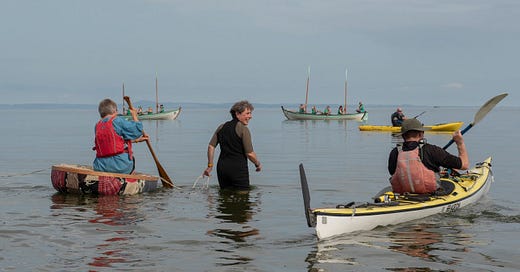






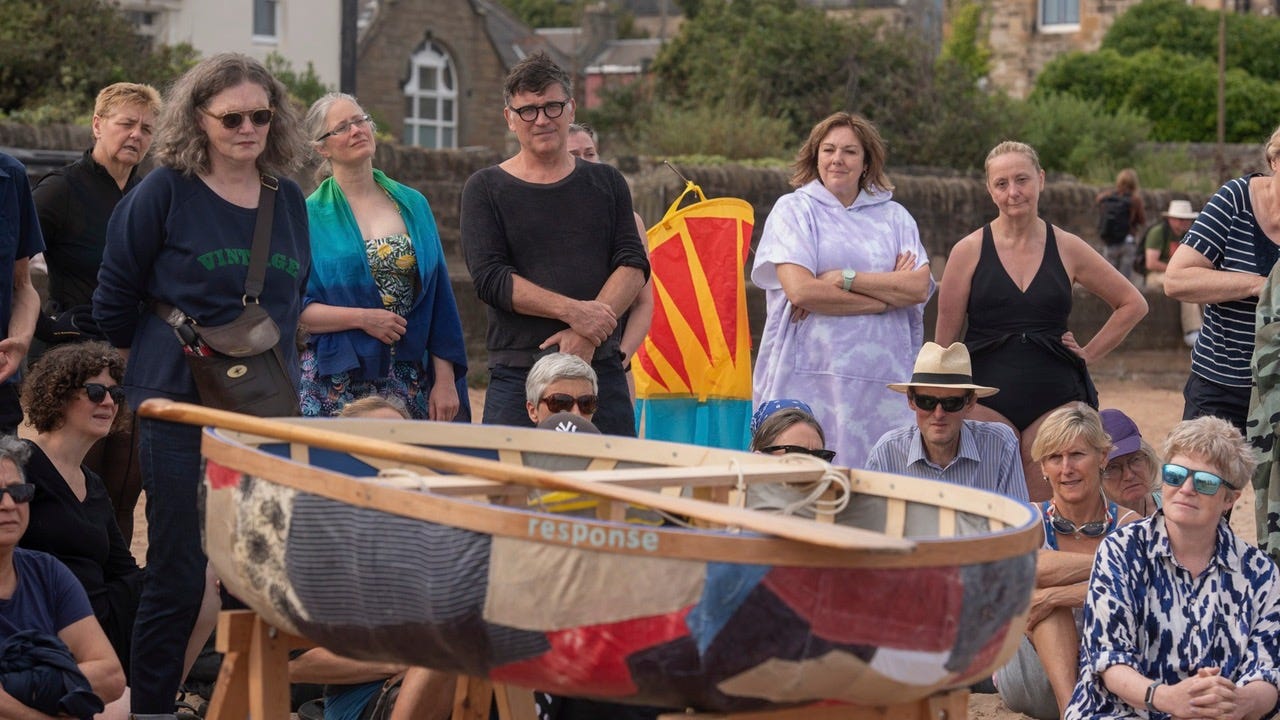



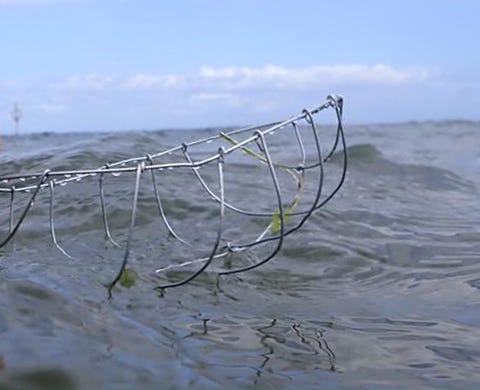


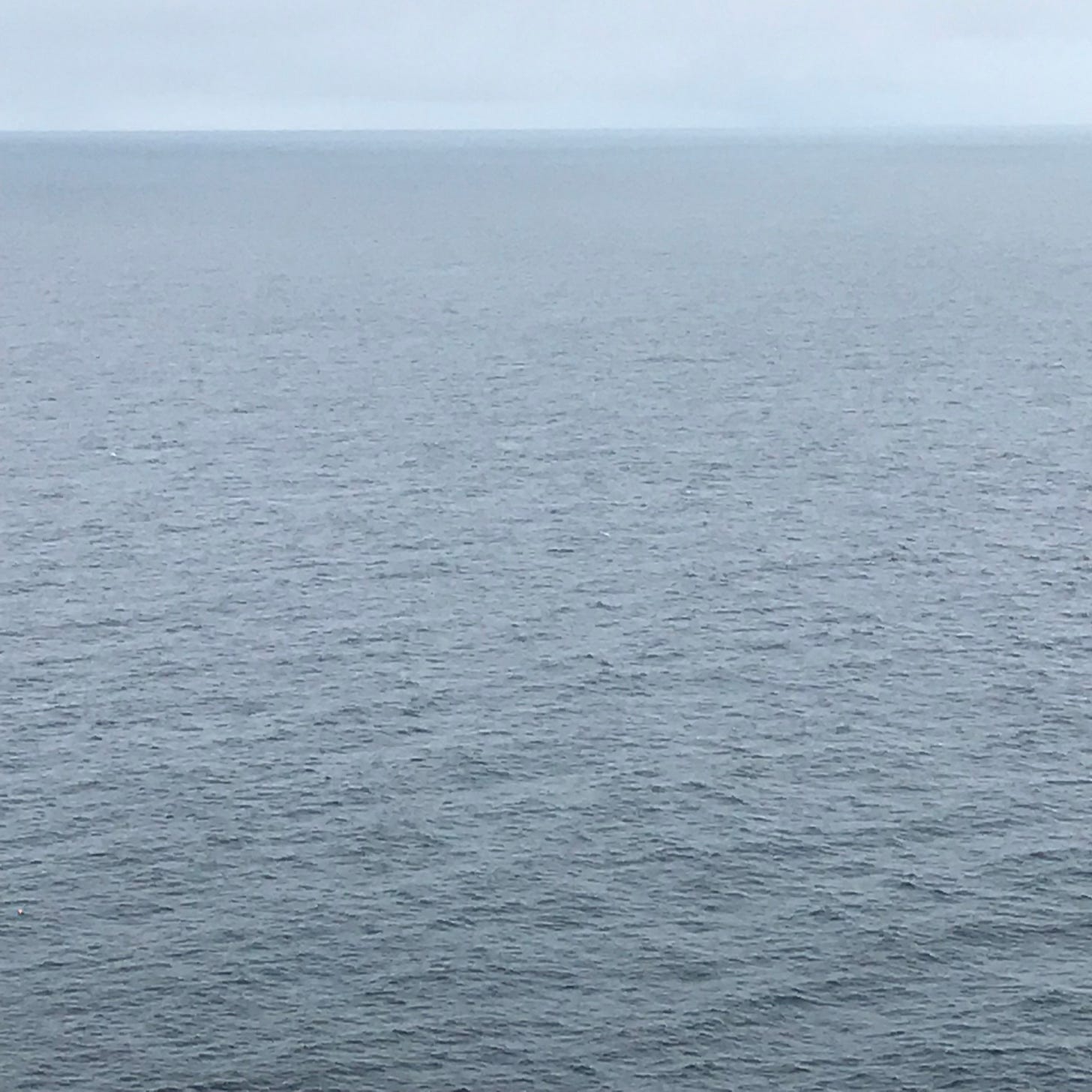
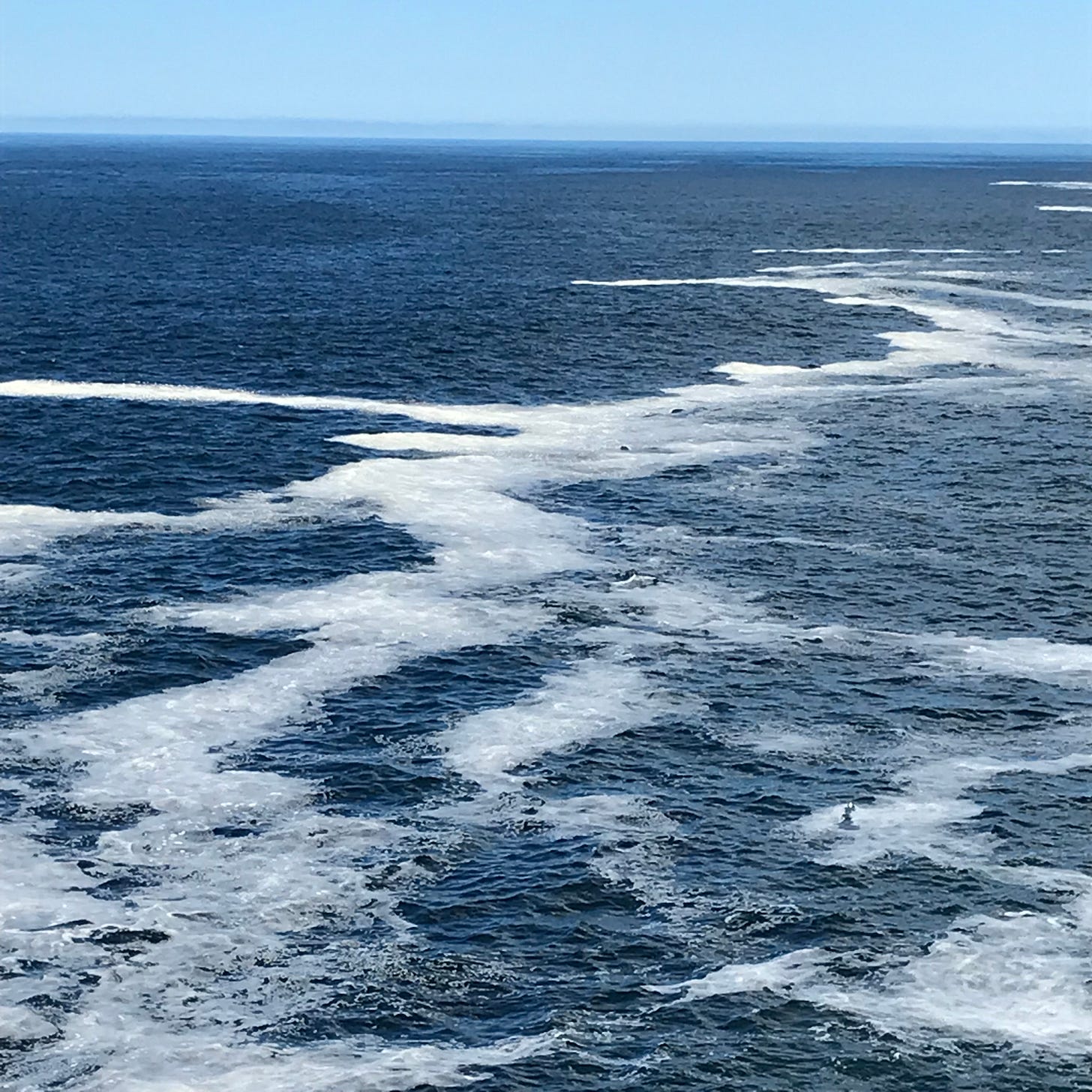
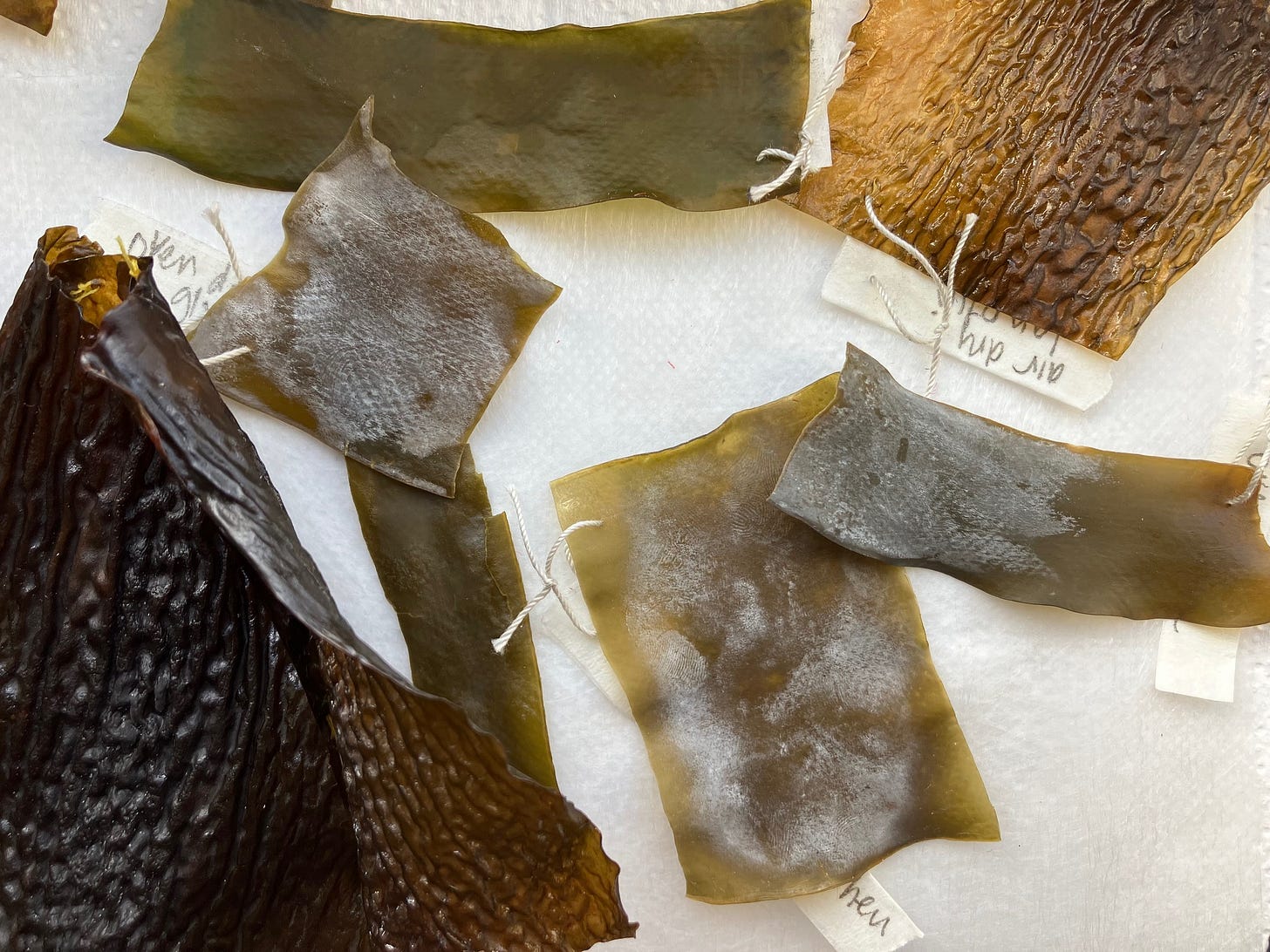
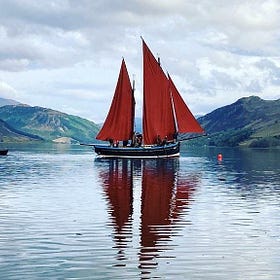
What an interesting article. I really enjoyed reading this, and look forward to the next phase of Jenny’s work. I’ve seen little bits and pieces of her making progress along the way and sadly missed the launch as ironically I was in Stromness hosting an exhibition at Northlight, which is then how I discovered you. How we are all joined in mysterious ways!
Hello - I just found you and am delighted to meet fellow travelers. I make Spirit Boats - they are sculptures, paintings or drawings. You have expanded my horizon.